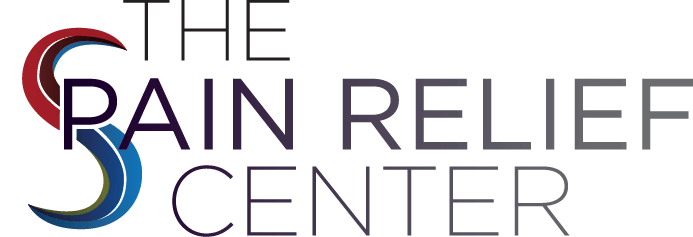SCIATICA PAIN RELIEF
Home » Conditions » Sciatica
CENTERS & INSTITUTES
If you have been diagnosed with the discomfort of sciatica nerve pain, you’re probably wondering, “How can I get some relief?” Treating sciatic nerve pain can take on several different forms. This will depend on the root cause of your sciatica problem, as well as the severity of your symptoms.
What is Sciatica?
Sciatica is a pain in the leg caused by irritation and/or compression of the sciatic nerve. The longest nerve in your body is the sciatic nerve. It originates in your lower back, and splits up at your hips. It then runs down your hips, buttocks, legs, and feet on both sides.
Sciatica usually comes from a herniated disc in the lower part of your spine. The lower part of the spine is the lumbar spine. The bones that make up your spine are vertebrae. The vertebrae are separated and cushioned by flat, flexible, round discs of connective tissue. Years of use, or an injury can cause a disc to wear down. If a disc gets worn down, the soft center pushes out from the hard outer ring. This puts pressure on the nerves around it and causes pain. If the nerve affected is the sciatic nerve, the pain can be particularly intense.
Sciatica Symptoms
The most common sign of sciatica is pain that radiates from your lower spine to your buttock and down the back of your leg. It’s possible to feel pain anywhere along the nerve pathway. However, it’s more common to follow a path from your low back to your buttock and the back of your leg.
The level of pain you may experience from sciatica varies. Some people experience only a mild ache. Others experience a sharp, burning sensation or excruciating pain. At times, it may feel like a jolt or electric shock. Sneezing, coughing, or sitting for long periods of time may make your pain worse. It’s more common for only one side of your body to experience pain.
It’s also possible to experience numbness, tingling, or muscle weakness in your leg or foot.
The more serious symptoms of sciatica include:
- Loss of feeling in the affected leg
- Weakness in the affected leg
- Loss of bowel or bladder function
Sciatic Nerve Pain Symptoms
- Numbness, pain or tingling that travels down one or both legs
- An “electric” sensation that runs down the leg
- Pain that spreads starting at the lower back
- Pain can be dull or sharp
- Pain will spike when you sneeze
- Weakness in one or both of your legs
- Inability to find a comfortable position
What Causes Sciatica?
When you have a herniated disc in your spine or have a bone spur on your vertebrae, your sciatic nerve may become pinched. It’s also possible for a tumor to compress your sciatic nerve. Diabetes can also damage the sciatic nerve.
Sciatica Risk Factors
There are some risk factors for sciatica:
- Occupation-If your job requires you to carry heavy objects, sit for long periods of time, or twist your back frequently, you may be at a higher risk for developing sciatica.
- Age-Wear and tear on your spine after many years of moving can erode discs. Herniated discs and bone spurs are the most common causes of sciatica
- Weight-If you are overweight or obese, the added stress on your spine can cause sciatica
- Prolonged sitting-If you are sedentary and sit for prolonged periods of time, you are more likely to develop sciatica than people who are active
- Diabetes-High blood sugar can damage nerve pathways. People who have diabetes have high blood sugar which can cause damage to the sciatic nerve.
Sciatic Nerve Pain Diagnosis
The pain management specialists at The Pain Relief Center will first learn about your medical history, especially concerning your back pain. We will want to know how long it has lasted, if you have numbness or weakness in your legs, and if you’ve tried anything to relieve the pain that worked.
Your doctor will also ask about your lifestyle to find out what kinds of activities you do regularly. The next step will be a physical exam. Your doctor might ask you to perform certain exercises to see if they make your pain worse.
If the pain is severe and won’t go away, your doctor might order some tests. These could include x-rays, CT scans, MRIs and EMG. These tests will look for herniated discs, bone spurs, and compressed nerves.
Most sciatica cases resolve within a few weeks without surgery. Usually, our doctors will suggest over-the-counter pain medications. If these don’t work, your doctor might prescribe stronger anti-inflammatories or muscle relaxants. Physical therapy and/or steroid injections might also be helpful at this point. Surgery is recommended only after the patient has tried several non-invasive treatments.
Sciatica Prevention
For some people, it’s almost impossible to prevent sciatica. People who are young and/or inactive may take steps that will prevent, or slow the onset of sciatica:
- Regular exercise-In order to keep your back muscles strong, it’s also important to strengthen your core muscles. This includes your abdomen and lower back. These muscle groups are important for good posture and spinal alignment.
- Keep good posture when you sit-You want your back to maintain its normal curve. Choose seats with good lower back support, armrests, and a swivel base. Placing pillows or towels on your lower back while sitting may help maintaining your back’s natural curve
- Use proper body mechanics-If you lift something heavy, use power from your legs, rather than your back. Move up and down, keeping your back straight. Bend with your knees and keep the weight close to your body. Ask someone for help lifting something heavy if you feel you are straining your back. If you need to stand for long periods of time, try to move your feet around periodically. It also helps to rest one foot on something a few inches off the ground.
Exercises for Sciatica Nerve
The Sciatica discomfort that is caused by physical issues in your soft tissues. This includes muscles, tendons, and ligaments-may be improved by targeted exercise and stretching. At The Pain Relief Center, we can offer instruction for specific movements to help your specific needs. Most of these movements will focus on core muscles and posture improvement.
A few common exercises for relieving sciatica pain include:
- knees to chest
- lower back twist
- quadriceps stretch
- buttocks and hip stretch
- groin stretch
Sciatica Pain Treatment
When treated properly, mild sciatica goes away over time. If you’ve followed your doctor’s directions and a physical therapy regimen closely and your symptoms persist, you should call your doctor. In the event you have any severe symptoms of sciatica, such as bowel/bladder control issues or muscle weakness in your legs, call your doctor.
Sciatic Nerve Pain Treatment in Plano, Texas
The team at the Pain Relief Center are here to help you if you or a loved one is experiencing pain from sciatica. Contact us today for more information or to schedule an appointment.
More Conditions
- Achilles Tendinitis
- Allergies
- Arthritis
- Back Pain & Low Back Pain
- Bulging Disc
- Car Accident Injuries
- Carpal Tunnel Syndrome
- Cervicogenic Headache
- Chronic Pain
- Cluster Headache
- Degenerative Disc Disease
- Fibromyalgia
- Foot Pain
- Interstitial Cystitis
- Joint Pain
- Knee Pain
- Low Estrogen
- Neck Pain
- Occipital Neuralgia
- Osteoarthritis
- Osteoporosis
- Piriformis Syndrome
- Plantar Fasciitis
- Reflex Sympathetic Dystrophy (RSD)
- Rheumatoid Arthritis
- Rotator Cuff Tear
- Sacroiliitis Pain
- Sciatica
- Scoliosis
- Shingles
- Shoulder Pain
- Spinal Pain
- Spinal Stenosis
- Tension Headache
- Thoracic Pain
- TMJ
- Trigeminal Neuralgia
TAKE ACTION
The most critical step on the path to recovery is finding a pain management doctor who can address your pain management needs successfully. The Pain Relief Center and its five specialized institutes are dedicated to meeting any and all of a patient’s needs. Located in the Dallas-Fort Worth area, Dr. Rodriguez and his friendly staff will help you along the path to recovery.
Our new center in Dallas is part of a nationwide development by Pain Relief Centers, geared to providing individualized and comprehensive healing and pain management services with unprecedented levels of compassion, care, and comfort for each patient.

